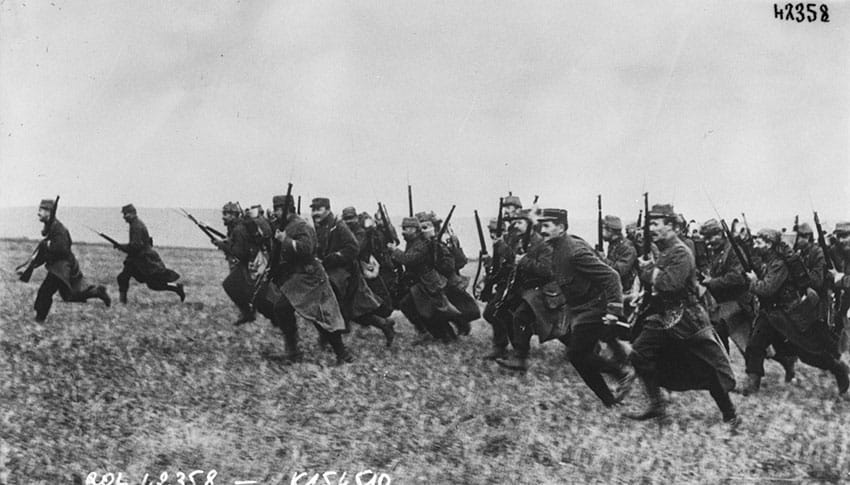
The horror begins
As the regimented columns of the German war hammer smashed down into France through Belgium in August 1914, the opening month of the Great War, it seemed they were driving everything before them. Rolling inexorably south, they were on the outer limits of Paris within weeks. Only a miracle could save France from a second humiliation of the kind that had been inflicted by Prussian blitzkrieg at Sedan in 1870.
The miracle came in the form of the British-French counter-attack from 6-12 September as French forces made a stand on the south bank of the river known as the Marne. Wheeling to face the threat, the right wing of the German army became separated from the main German thrust, opening a 50 kilometre gap. Exhausted French and British forces saw the opportunity and grasped it, pouring into the opening, simultaneously flanking and attacking the German First and Fifth armies.
With their master strategy – the von Schlieffen Plan – temporarily derailed, the German offensive ground to a halt, digging in to prepare a second assault that would doom France.

Different kinds of miracles
Instead, the Western Front settled into the prolonged nightmare of trench warfare that would last until November 1918. By then, the von Schlieffen Plan which had been contrived to deliver a stunning lightning victory to the Kaiser had completely backfired, costing both sides an estimated 20 million casualties. Yet having exploited the initial German error, the French, at least, were quite clear about what had just transpired. The combined French-Anglo offensive was to forever be described as ‘the Miracle on the Marne.’
What is less generally known are the multiple miracles of a different kind occurring everywhere in the trenches over the next four years. Stronger than Steel: soldiers of the Great War write to Therese of Lisieux, just published by Angelico Press, carries the remarkable accounts written by French soldiers of their devotion to a young woman who had died unknown to the world in her Carmelite convent at the age of 24. Her death came just 17 years before the commencement of the War to End all Wars. What was astonishing was that she was reported to be appearing to them and protecting them in the heat of battle and the reports flooded in by the thousands.
Today, it is estimated that perhaps half the French Army were carrying photographs and relics of the-then unbeatified Therese of Lisieux (hence the book’s subtitle), praying to their little Sister of the Child Jesus, as they affectionately called her, to protect them from the horror they lived through daily.
Unknown appearances
Herein lies one of the major attractions of this new book. While phenomenal devotion to St Therese throughout the 20th Century is well-known, together with numerous accounts of how millions say she has interceded for them in the necessities and sufferings of life, less known are the prodigious apparitions and miracles that were occurring amid the mud, the carnage and the horror of the Western Front.
Devotion to Therese had spread like wildfire through the French Army and thousands of soldiers reported her apparitions to them as they prayed desperately for her intercession. Their experiences convinced them she was with them and their trust in her intercession was absolute. She not only saved their lives, she inexplicably healed horrific wounds that field surgeons were convinced were mortal. She gave dying soldiers serenity. On some occasions, she was witnessed not just by individuals but by whole groups.
As a result, relics associated with Therese and medals invoking her protection became among the most sought-after and precious currencies of the trenches. Soldiers distributed them to their comrades while her spiritual autobiography, now recognised as a classic of Christian spirituality, was wildly popular, being read and re-read and passed endlessly on from one soldier to another.
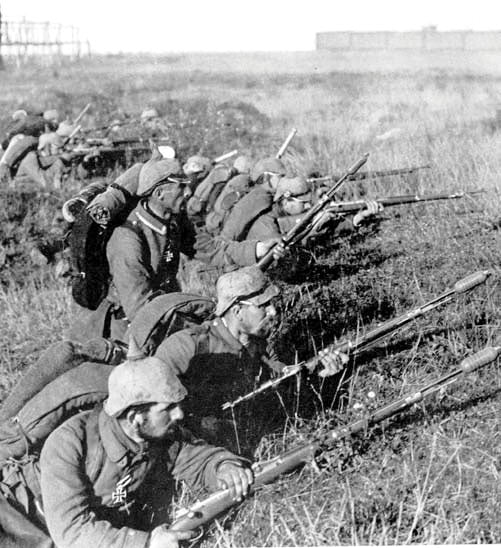
Not only miracles …
Often, it would be read aloud by candlelight in dugouts to groups of soldiers straining to hear between the clubbing of the guns every word of their patroness’s account of her life and to take its lessons to heart. Countless soldiers reported being inspired by her spirituality. Therese was therefore not just working individual wonders on a prodigious scale, she was also converting thousands, if not more. Yet it was not just French soldiers who experienced and benefited from the previously-unknown Carmelite’s appearances.
Lance Corporal James Dalton, serving with the Royal Dublin Fusiliers, arrived on the Western Front on 11 September 1914, the second last day of the First Battle of the Marne. He already had a strong devotion to the Little Flower – interesting, because Therese was increasingly known among non-French forces as well. Five months later he wrote to the Carmel at Lisieux to inform the Sisters of his experience.
“On an evening in October 1914,” he wrote, “about six or half past six, I was in the trenches. At this moment we were not shooting, because the artillery was in action on both sides.
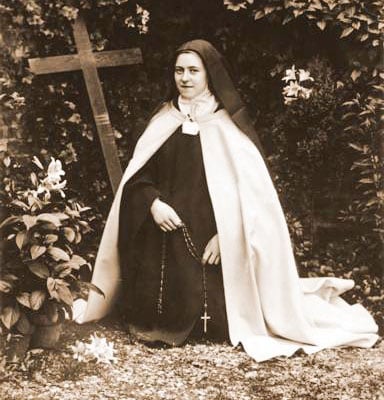
‘She was very beautiful’
“I prayed to the Little Flower, and suddenly a nun appeared before me, six or seven feet away from me. She was very beautiful and was on her knees, her head bent down and her hands folded; but her face wore an expression of intense sadness, as if she deeply pitied us. I recognised at once the saint of Lisieux. This happened at Hiplines, near Armentieres.
“A few weeks later, I saw her again twice, in the same attitude, as if praying for us, and I feel her effective protection surrounding me every day.”
His letter, one of the 75 contained in this volume, is co-signed by a priest simply listed as Fr Farrington, presumably a chaplain of the British forces.
Saved amid the shelling
Therese seemed to be everywhere. No situation was beyond her protection and intercession, even in the worst moments of what was becoming the most horrific war in human history.
Private Paul-Henry Joly, a soldier in the 229th Infantry Regiment, wrote to the Mother Superior at Lisieux on 14 September 1916 recounting his engagement two months earlier in the horror of the Somme. The battle raged from 1 July until 18 November that year and cost both sides more than a million casualties in total. The first day of fighting alone on 1 July cost the British Army 57,470 casualties – the worst in its entire history – while names from the offensive such as Fromelles and Poziere were to become legendary, including among the newly-arrived Australian soldiers of the Fifth Division on the Western Front.
“I am delighted to give you a few details about the graces I owe to Sister Therese of the Child Jesus,” Private Joly told the Reverend Mother in his letter.
“Since the beginning of the war, I have carried with me, with the utmost respect, her precious relic, and it will never leave me. I have already had many bad moments, but my little saint was always there to save me.
“Among all the dangers I incurred, the most noteworthy was the combat of July 30 and the following days. We were in the Somme at the time, assigned to reinforce the first-line troops. I was serving as a liaison officer, and we had to endure the most horrible bombardments, for four long days, nonetheless successfully repelling enemy attacks.
“One evening, on August 2, we were huddling, a full half-section of us, around a shack, which was being smashed to pieces under heavy gunfire. A friar belonging to the group was exhorting us to pray in this increasing danger, and my comrades were saying the rosary. As for me, while I was praying to the Blessed Virgin, I invoked Sister Therese, confidently calling on her for help. All of a sudden, around 11 [pm], while the battle was raging, I saw her standing at the foot of a machine gun that was there. She was looking at me and blessing us all. She then told me with a smile: “Don’t be afraid, I have come to protect you.”
“Deeply moved, I cried to my fellow soldiers: “I am seeing Sister Therese. She is here! We are safe!” And as a matter of fact, not one of us died, and we soon got out of this awful situation safe and sound.
“This is why I love her so, my beautiful little saint! All my thoughts go to her!”
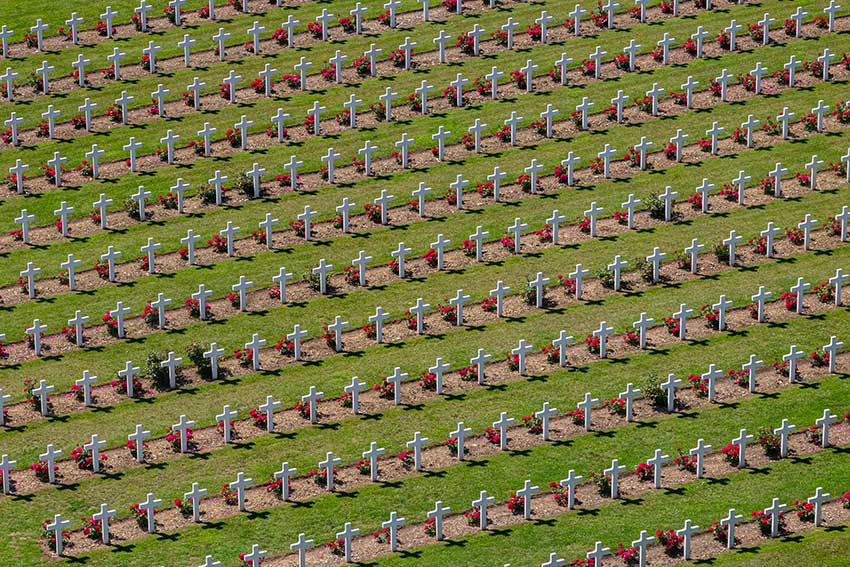
Not just during the war
One intriguing question is whether Therese appeared to the ‘Bosches’, the French pejorative term for the German troops. Heaven’s sorrow, so to speak, clearly extended to all the dead and maimed regardless of which side on which they fought, yet there seems to be scant evidence for apparitions and interventions from the Little Flower on behalf of the Germans, many of whom were also Catholics. Perhaps time and tide will one day tell us more.
Touchingly, the letters continued to come for decades. One, dated 1978, is written to the Carmel by General Jean Jourbert des Ouches, then aged 86 and a Commander of the Legion of Honour, France’s highest award for bravery. Recuperating in hospital after being wounded on the Marne in 1916, he came to know friends of her family, the Martins, who gave him her Story of a Soul and urged him to read it.
Seriously wounded again at Verdun the following year, he found himself dying. In despair, he cried out to St Therese for help and was inexplicably saved from what seemed like certain death. Surveying the growing loss of faith in France in the 1970s the old general decided the time had come to repay a debt of honour to his little angel in the hope that his personal testimony might help others not to lose their faith.
Medals for miracles
Therese seemed almost ubiquitous in moments of dire need. Her Carmel at Lisieux was increasingly bombarded with accounts written by soldiers reporting their visions and experiences of her, professing their devotion, promising to make pilgrimages on leave to her grave and begging for relics, images and medals. Beleaguered soldiers in the mud of the trenches sent 5-franc notes or whatever they could scrounge together to the Carmel asking for medals and relics. But while they sent money they sent much more. A constant stream of military medals for bravery such as the Croix de Guerre were also sent as signs of thanks for Therese’s favours. What the Sisters made of it all is not recorded.
While just 75 letters furnish the pages of Stronger than Steel, the foreword written by well-known US priest Fr Dwight Longenecker reveals that there are thousands still on file in the archives of Lisieux. Like Jean Pierre de Caussade’s letters of spiritual direction to the Visitation convent at Nancy in the northeastern department of Meurthe-et-Moselle written 200 years earlier, the thousands of letters on file will undoubtedly be treasured for generations and centuries to come. Their eventual publication in their entirety, presumably in volumes, is something for which we can only yearn. Interestingly, some can be seen on the English language archives section of the Carmel website.
Fr Dwight Longenecker’s foreword, interestingly, also reveals how he was touched by the Little Flower. As a young Anglican minister hiking around France in the 1980s, he stayed at Lisieux where he reports an experience he is convinced was of St Therese. She personally played, he believes, a role in his own conversion to the Catholic Church and eventual journey to the Catholic priesthood.
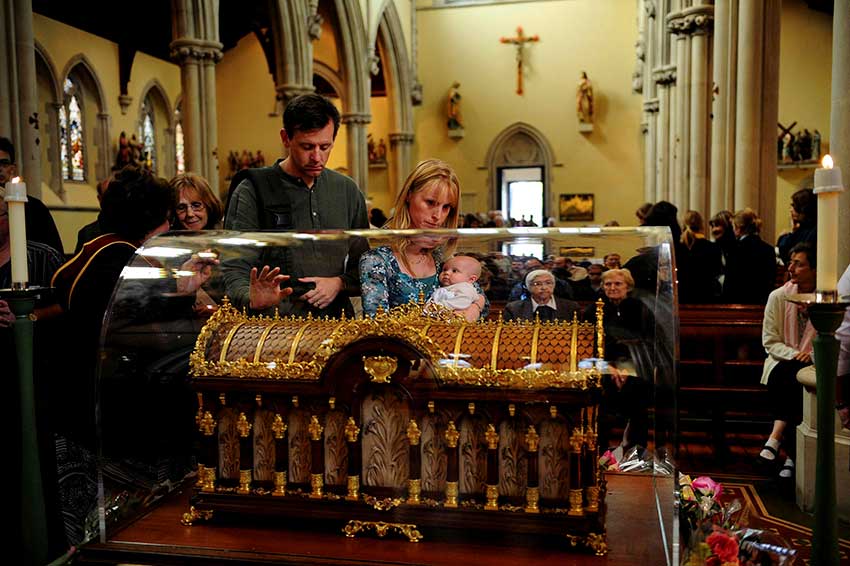
The Little Flower’s lesson
Still, the question remains: what are the significance and lessons of Therese’s apparitions and interventions on behalf of the soldiers living and dying on the Western Front? Historian Paul Johnson described the Great War as Europe’s “first great collective suicide attempt.” Looking back just over a century later, it’s hard to disagree.
Perhaps one lesson is that Therese demonstrated prodigiously in a moment that needed it – perhaps more than at any other time in history at that time – that God is never absent from human suffering, even if that suffering is created by sinful humans and, in the process, they drink to the very dregs of the cup of evil.
No matter how far we run from God’s love, no matter the evil we do, God is always there to show us the way back to Him, even if that means going into the hells we create – for our sake.
Stronger than Steel: Soldiers of the Great War write to Therese of Lisieux. Angelico Press, 158 pages.
Related
